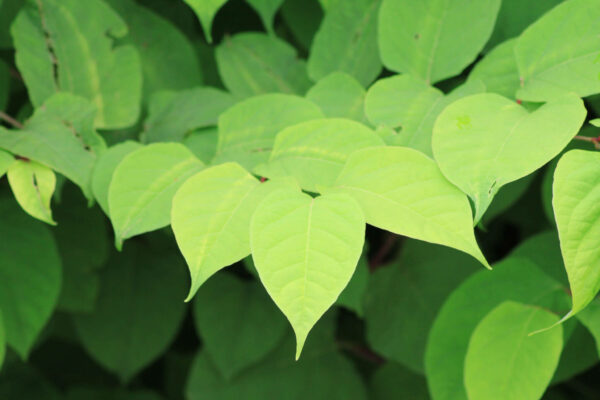“Japanese Knotweed Cannot be Eradicated” – Allegedly

A number of media sources, including the BBC, have made such claims in the last week. They have based this upon a paper published online on 23 April 2018 by the Department of Biosciences at Swansea University. However, that conclusion is not stated in the research paper.
The paper reported the results of a large-scale three-year field trial which tested the efficacy of 19 physiochemical methods of controlling Japanese knotweed. Its conclusions included: “Though no treatment delivered complete eradication of F. japonica within 3 years of the first treatment application, glyphosate applied at an appropriate dose, phenological stage… and level of coverage…was found to be the most effective control treatment.”
The exhibition poster for the study published in November 2016, shows that the three test sites in South Wales had well-established colonies of the plant. The study does not comment on the maturity of the stands or, indeed, whether an appropriate treatment programme applied during the right time in the growing season would eradicate less well-established knotweed that commonly present problems in residential neighbourhoods.
One of the trials stated aims was to account for “extensive lateral extension of the rhizome from the above grounds stands”. However, the sampling plots were only 4m2, with a 1m gap between them. Given that the rhizomes in a mature stand can reportedly show lateral growth of more than 7m, it is not known what effect, if any, the treatment in one plot might have on the neighbouring one. This is not a criticism of the research, which is understood to be the most extensive field-based assessment of knotweed control. There are clearly resource constraints in any such field trial.
Arguably, one of the most important messages from the research has been overlooked by the media. It gave a firm recommendation that further herbicides are needed to protect the native biodiversity of our ecosystem from invasive species, especially in light of the withdrawal of certain chemicals from use.
“Optimising physiochemical control of invasive Japanese knotweed” by Daniel Jones, Gareth Bruce, Mike S. Fowler, Rhyan Law-Cooper, Ian Graham, Alan Abel, F. Alayne Street-Perrott and Daniel Eastwood is published on http://cronfa.swan.ac.uk/Record/cronfa39552
Andy Creer acted in Williams v Network Rail Infrastructure Ltd [2017] UK CC (02.02.17) a test case involving the liability for property damage caused by Japanese knotweed.
Disclaimer
This content is provided free of charge for information purposes only. It does not constitute legal advice and should not be relied on as such. No responsibility for the accuracy and/or correctness of the information and commentary set out in the article, or for any consequences of relying on it, is assumed or accepted by any member of Chambers or by Chambers as a whole.
Contact
Please note that we do not give legal advice on individual cases which may relate to this content other than by way of formal instruction of a member of Gatehouse Chambers. However, if you have any other queries about this content please contact:

